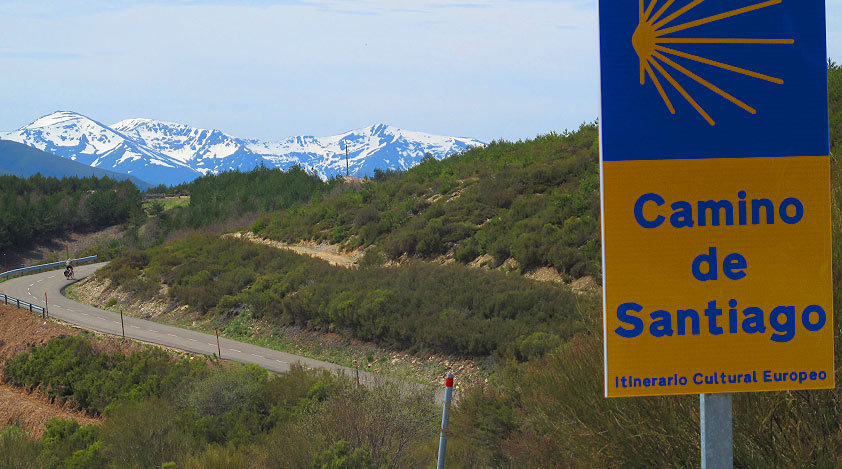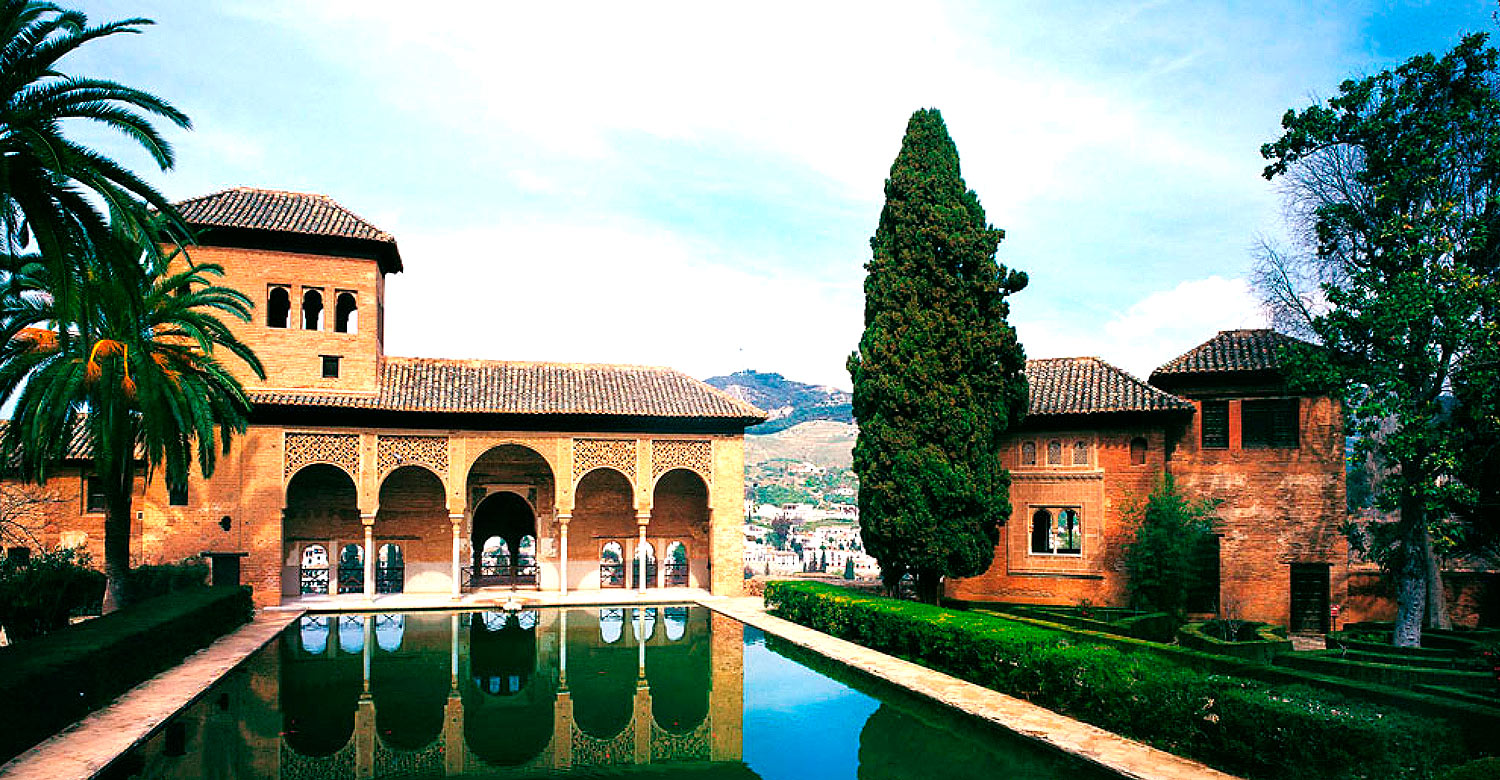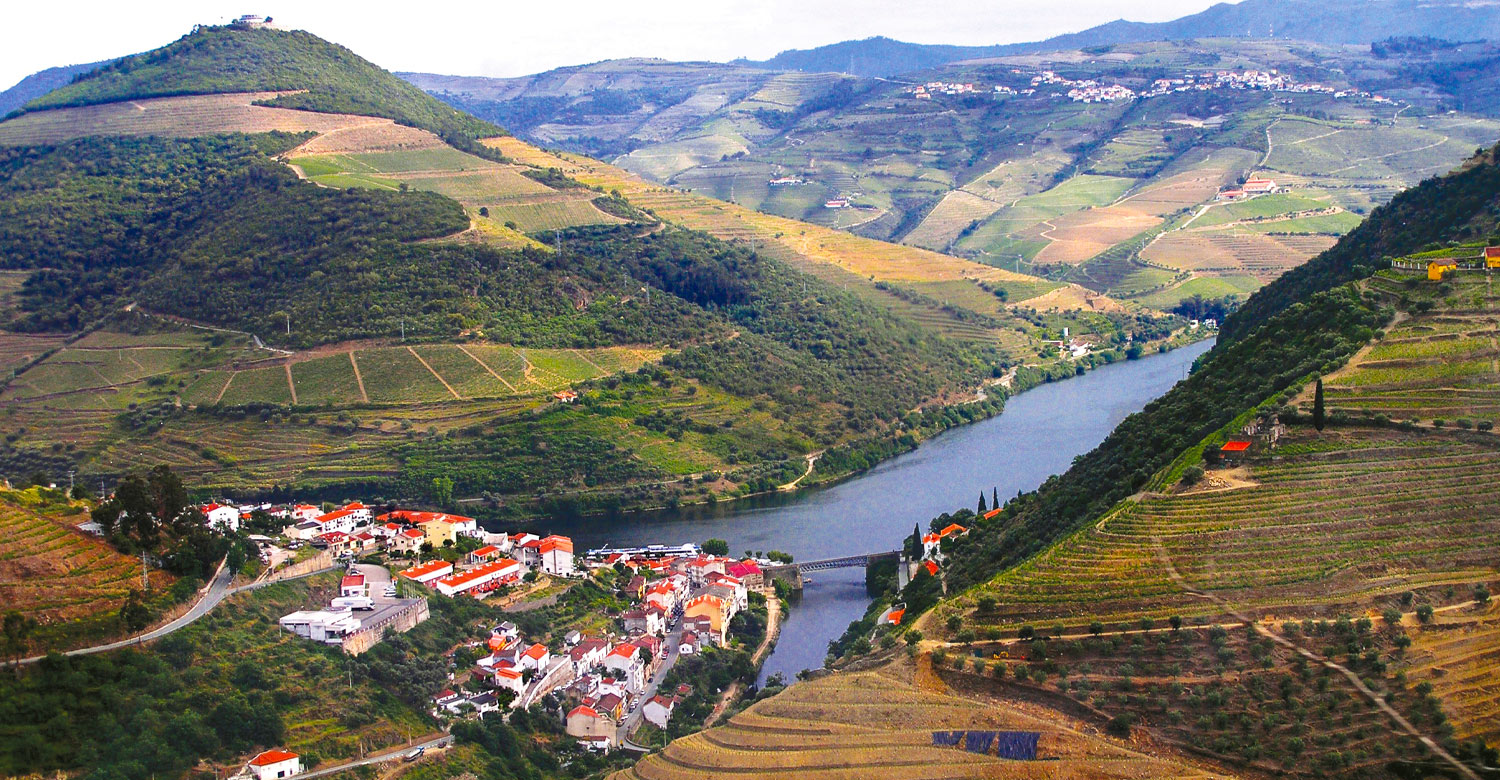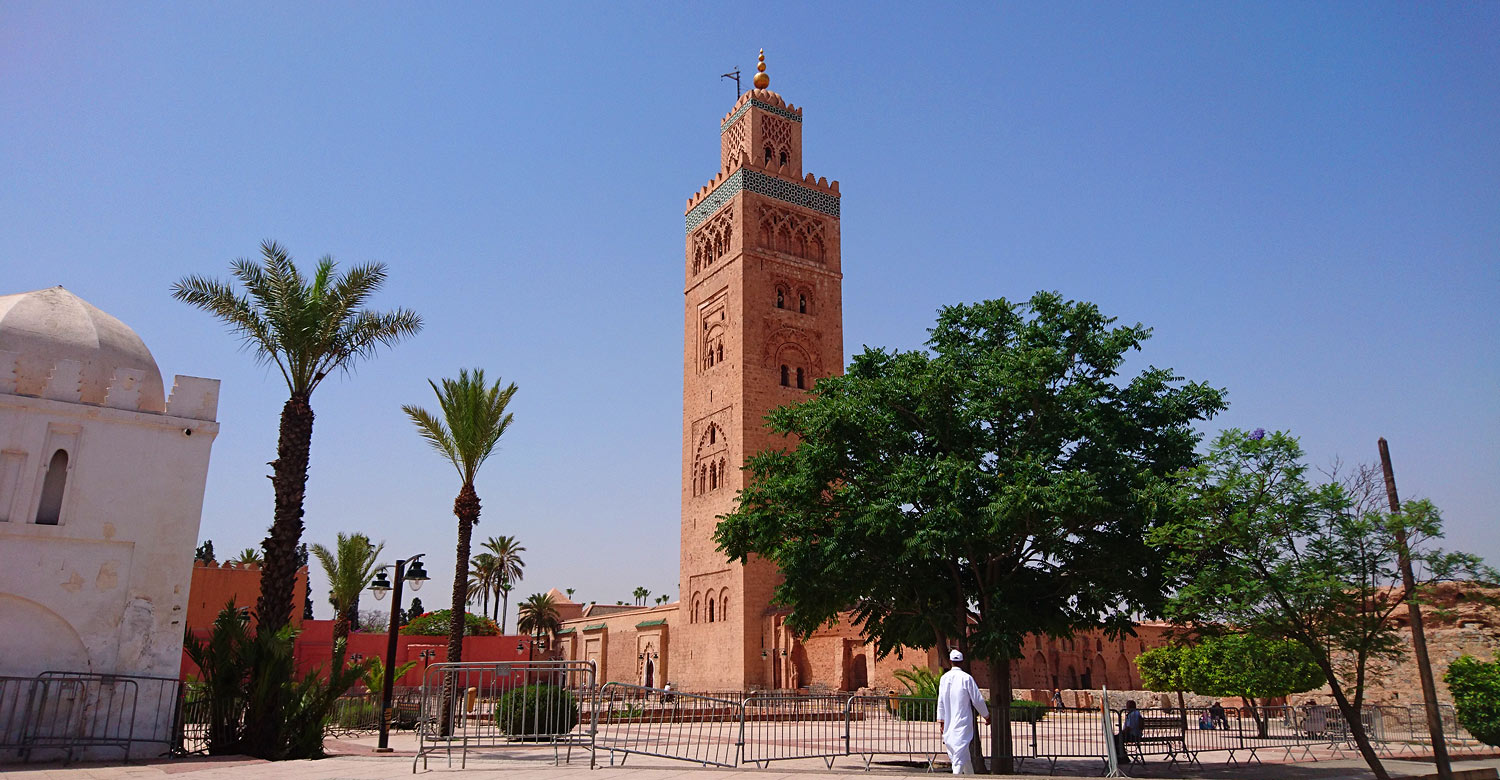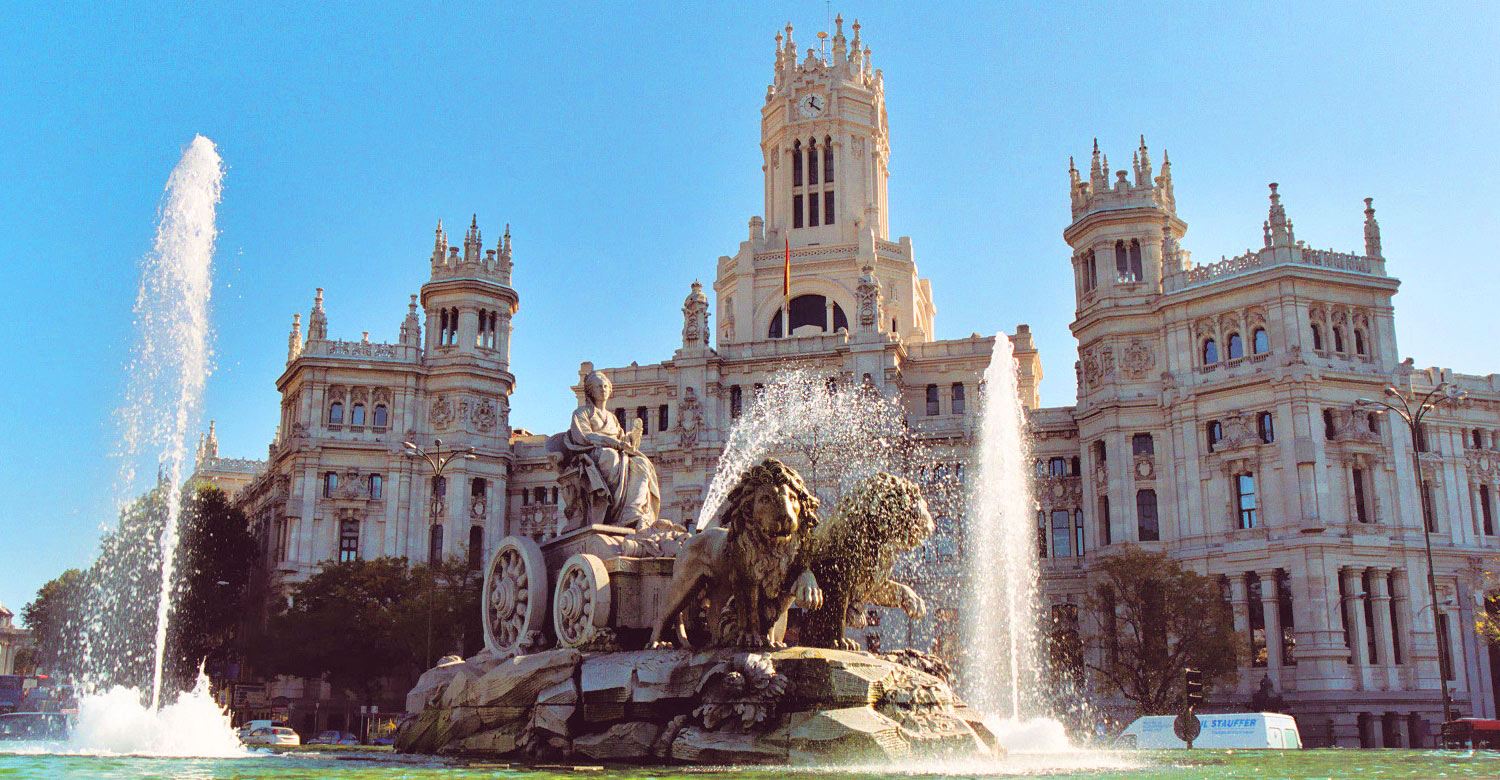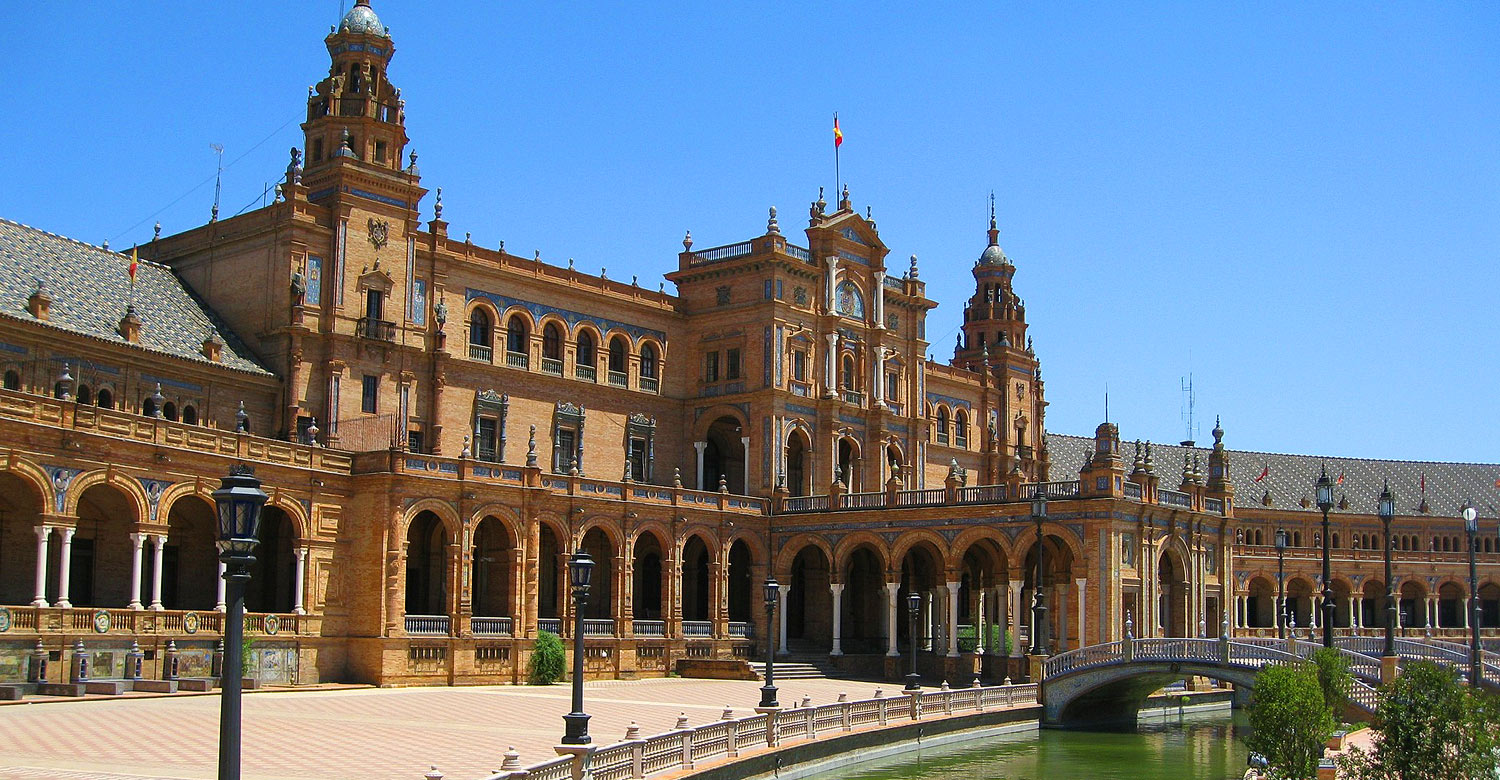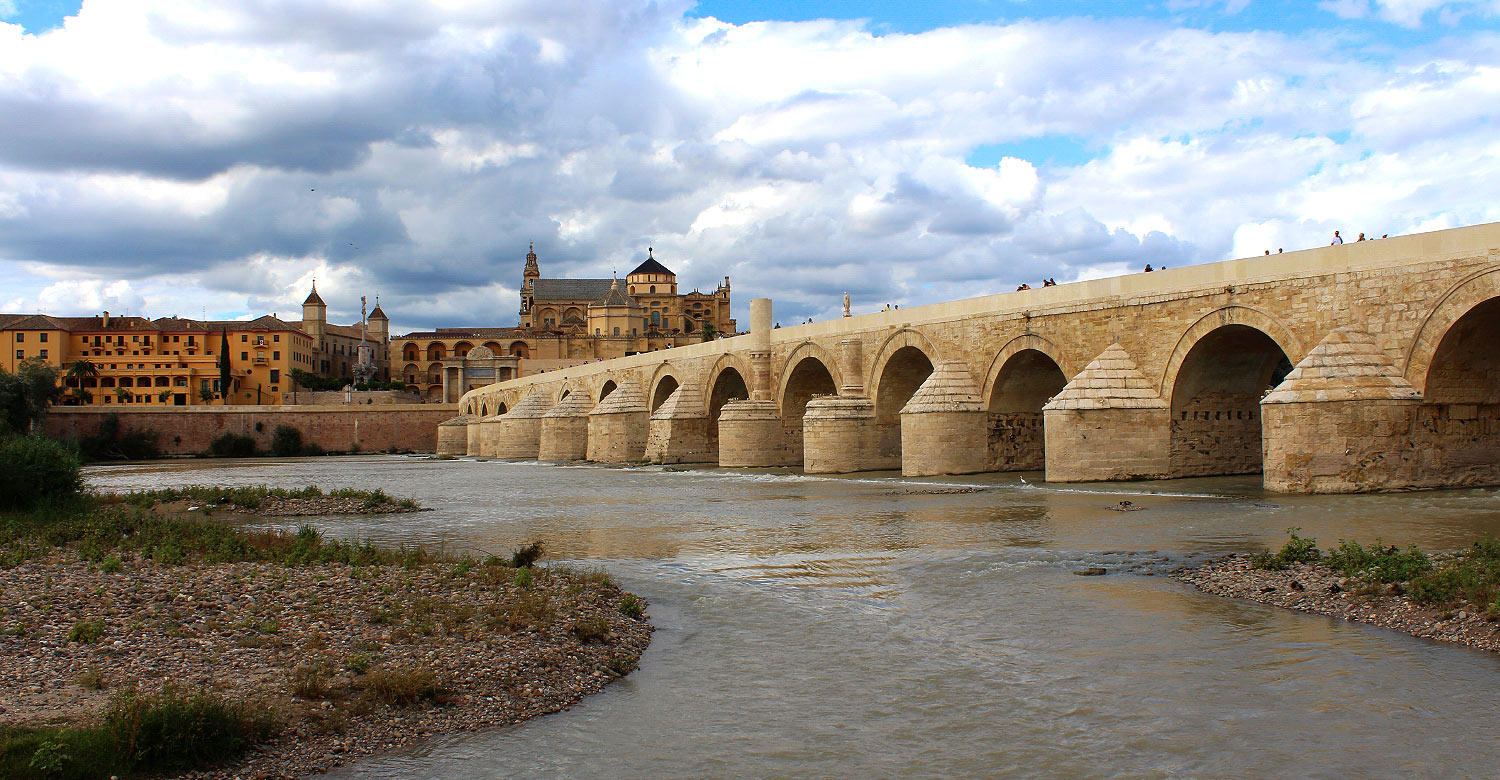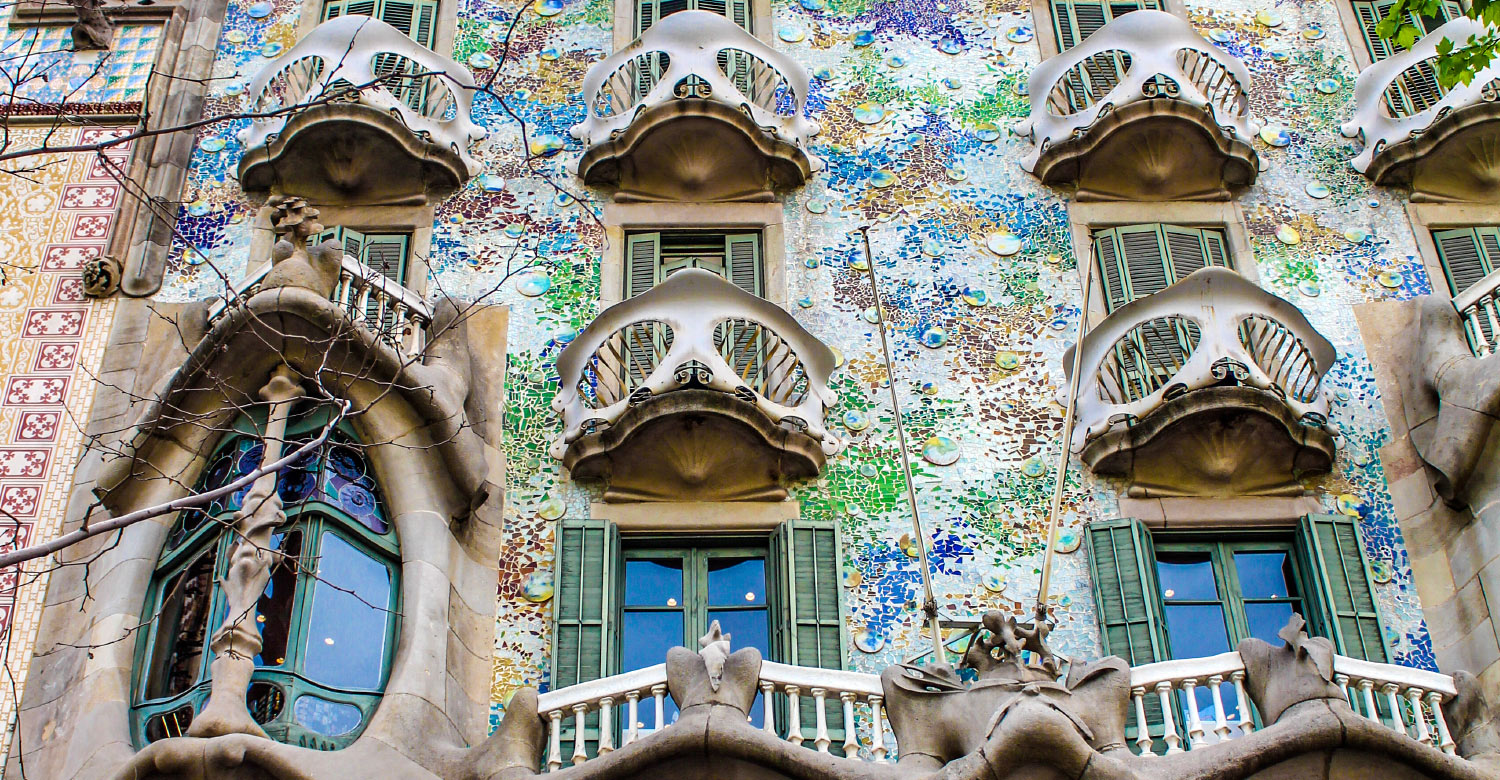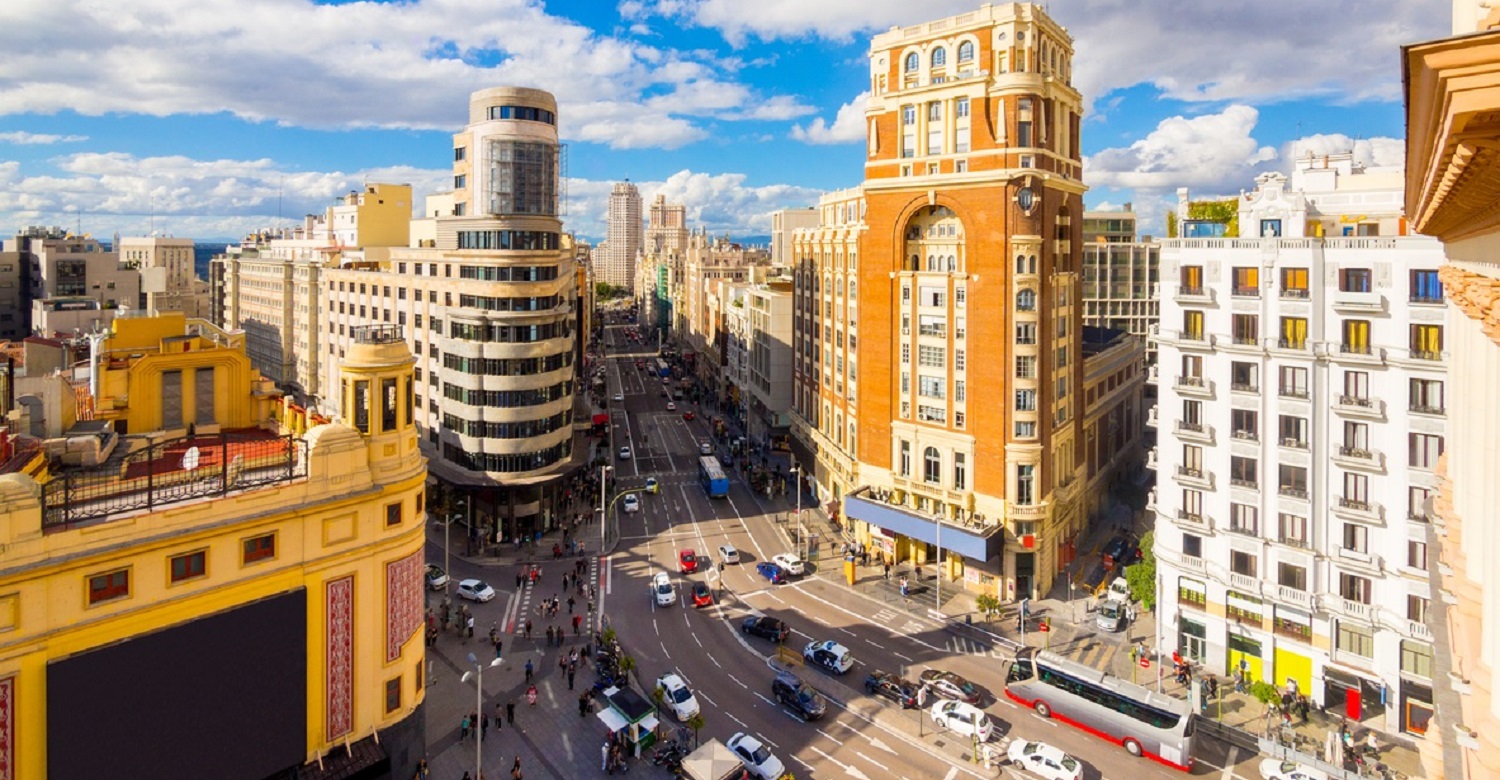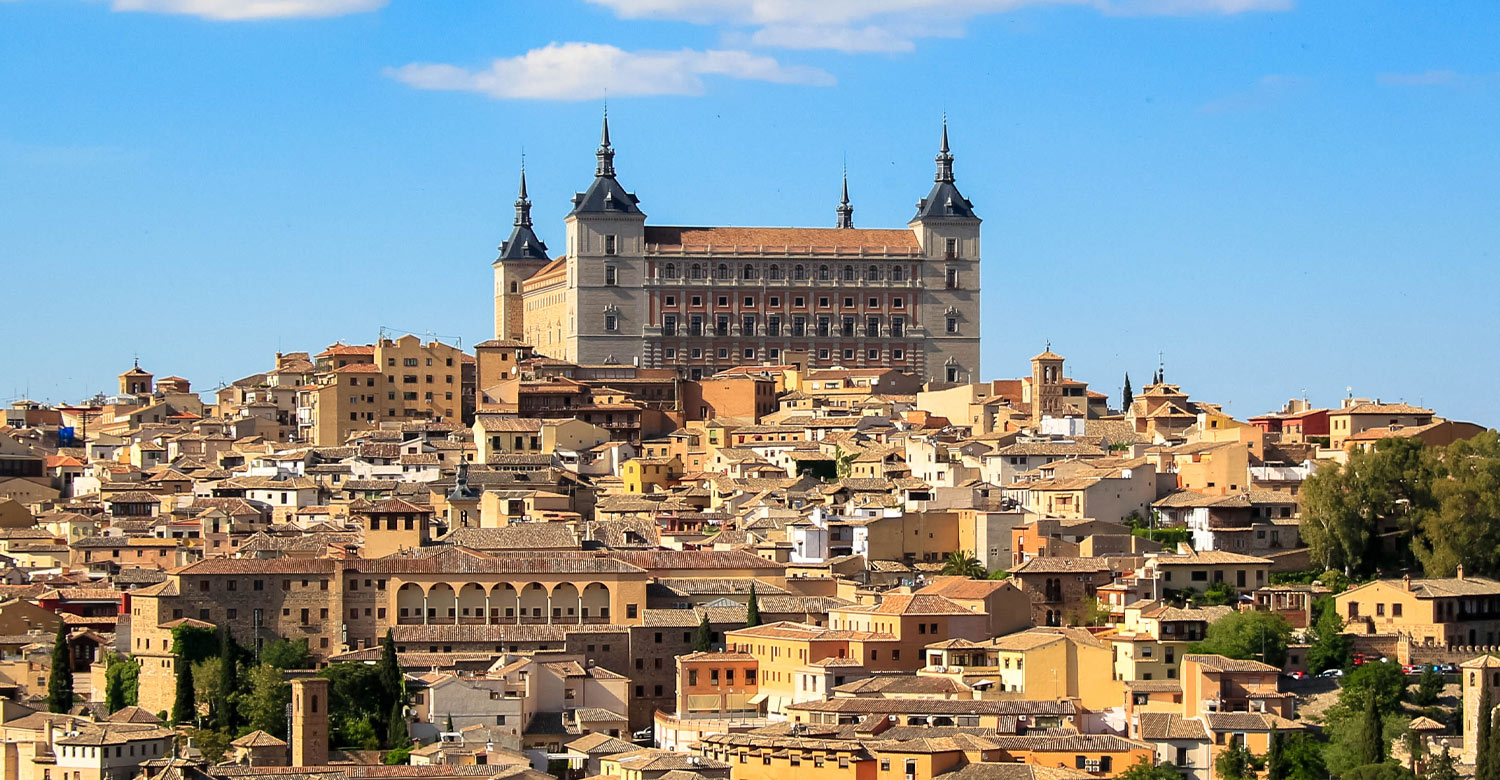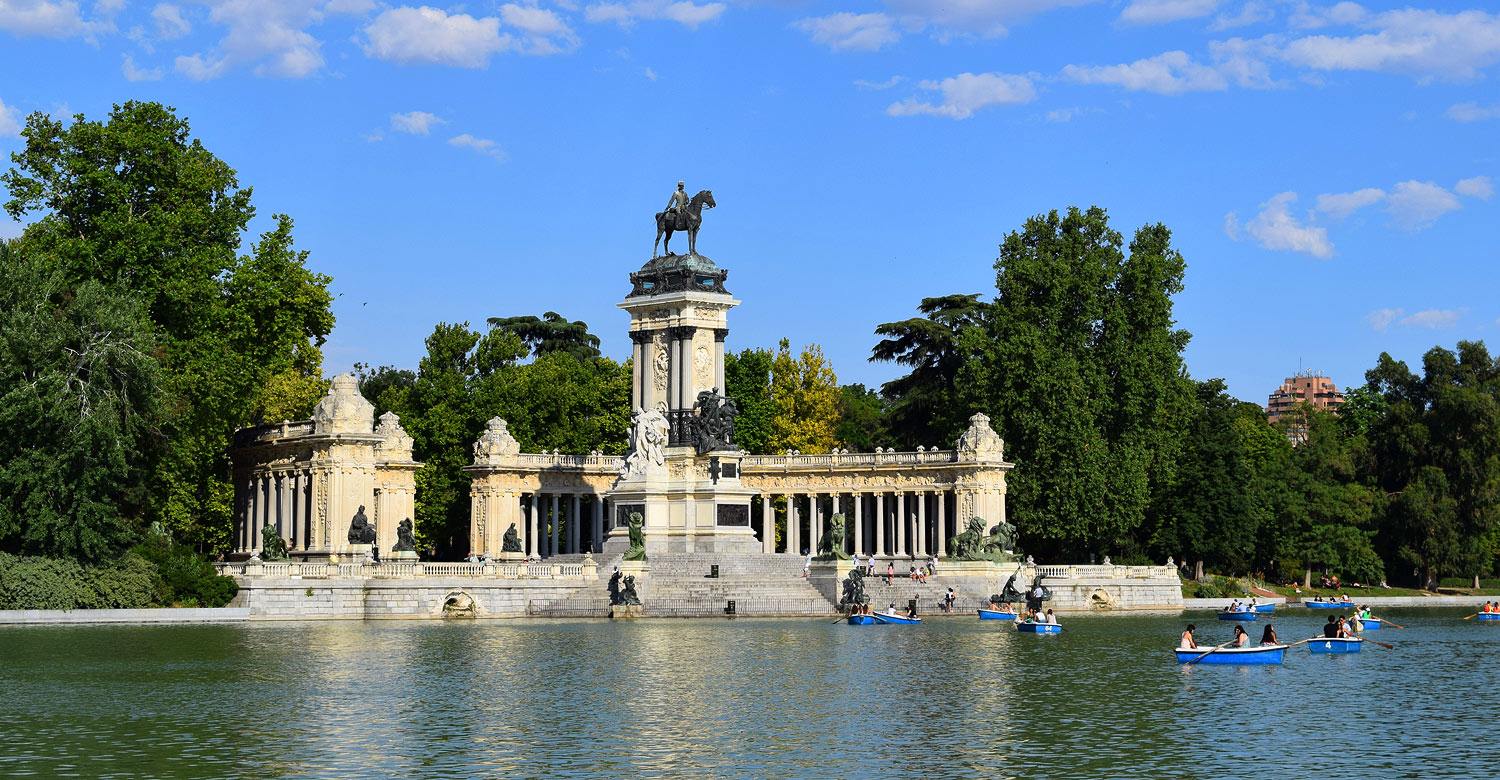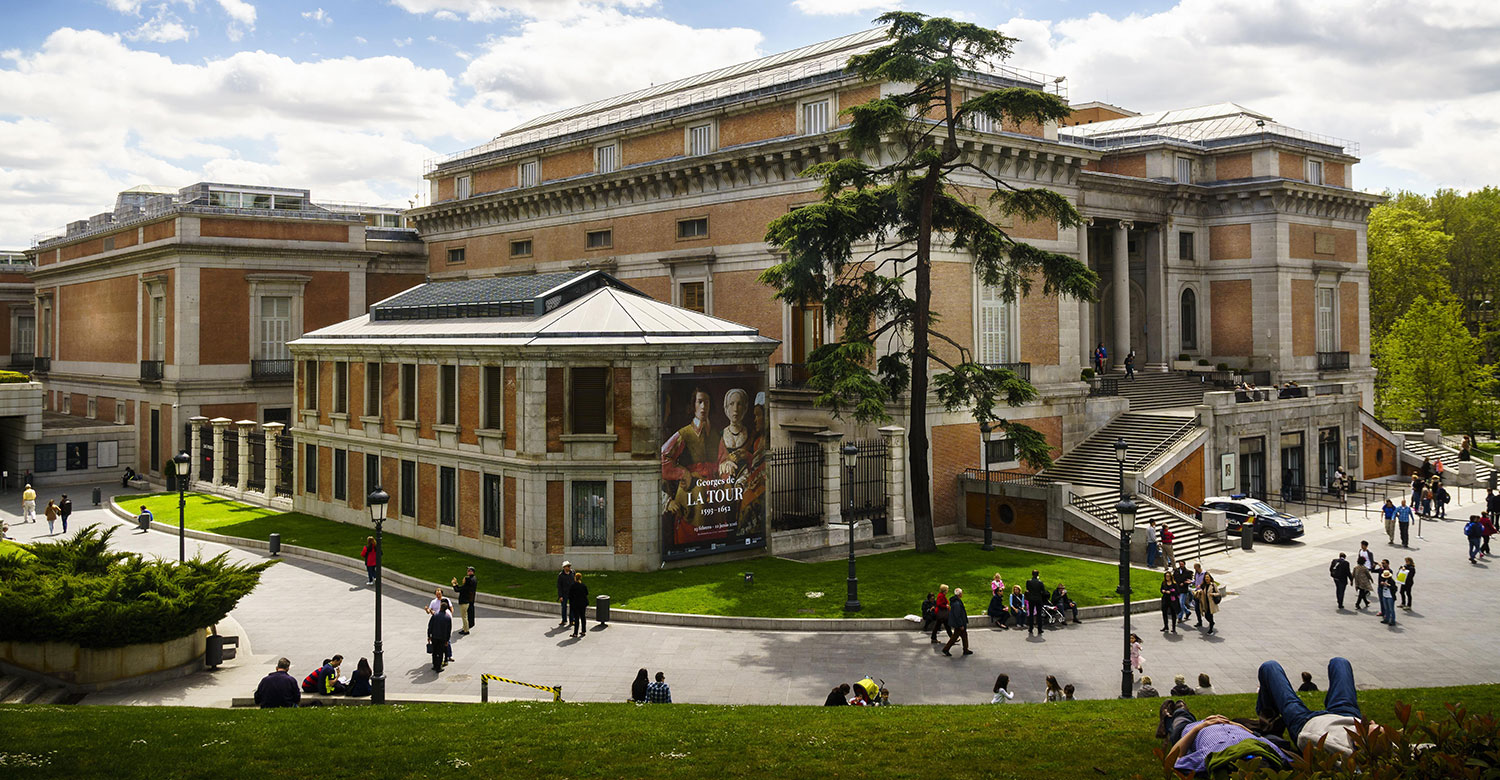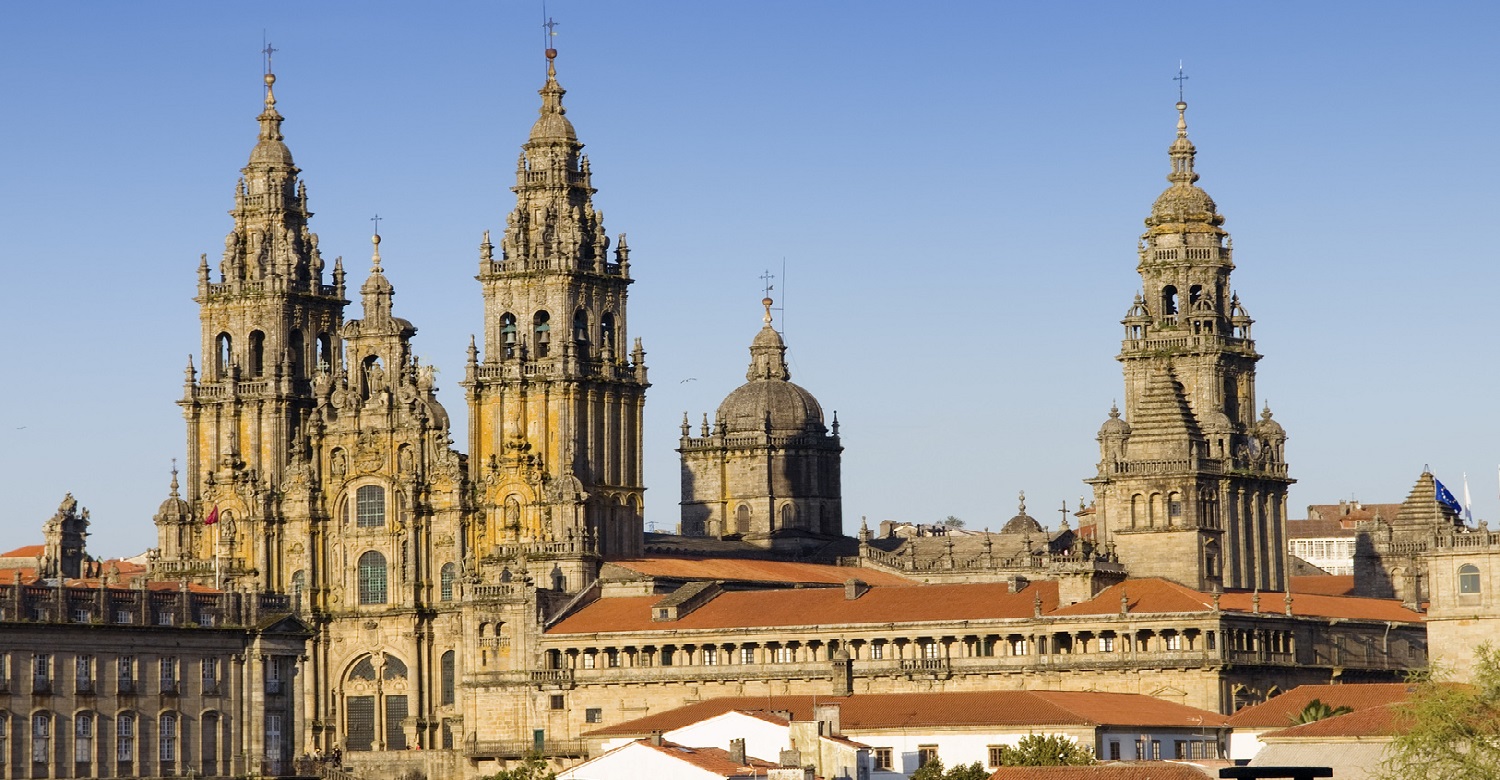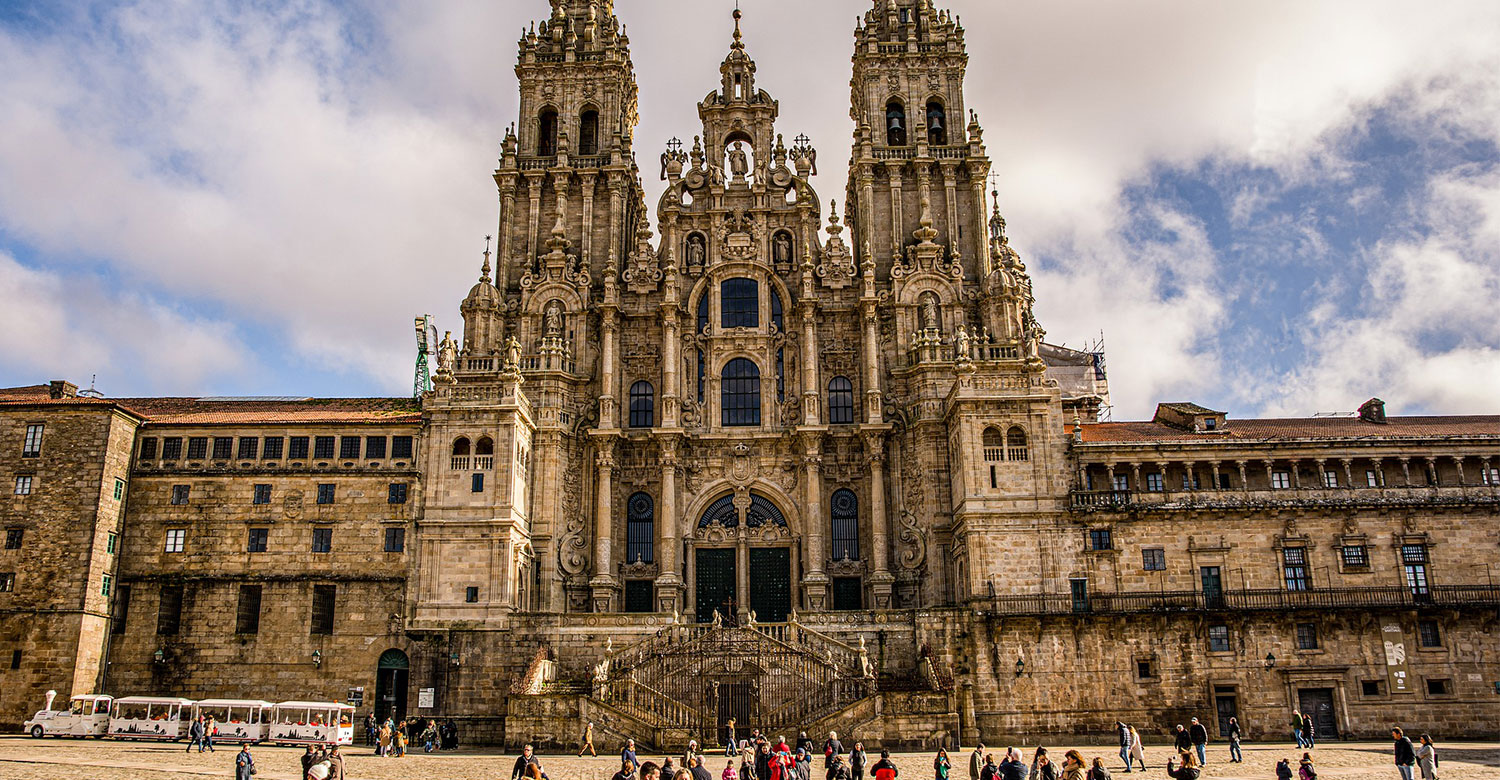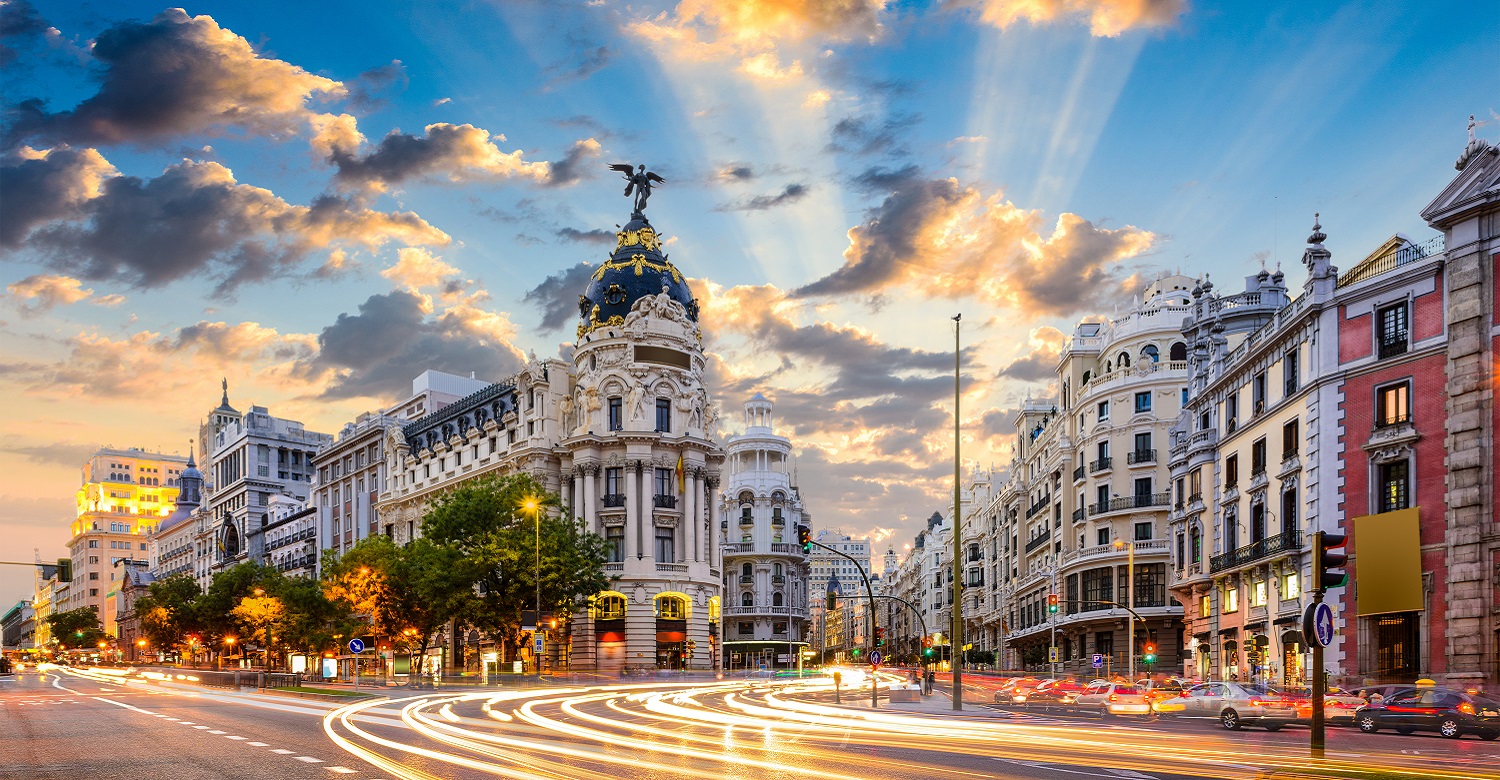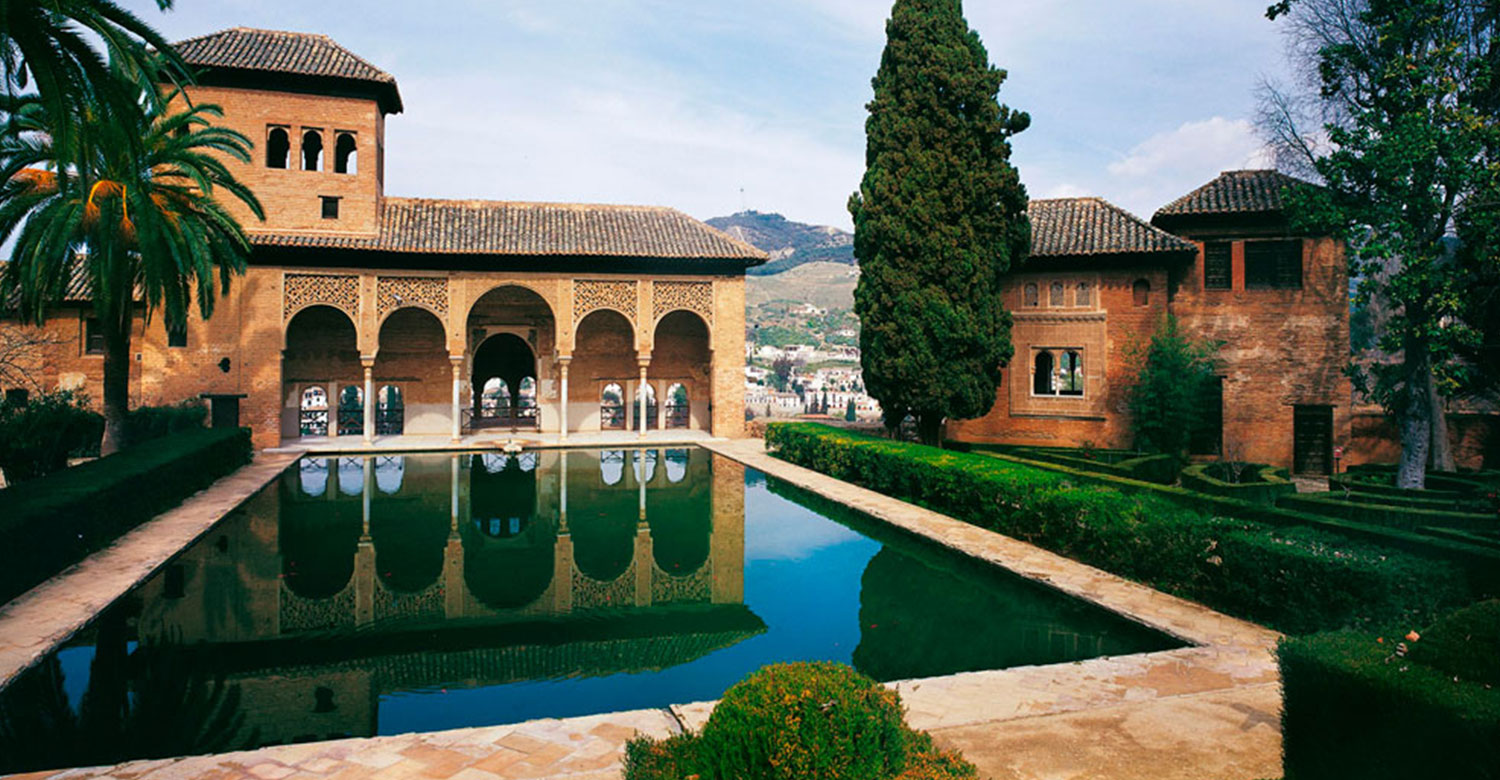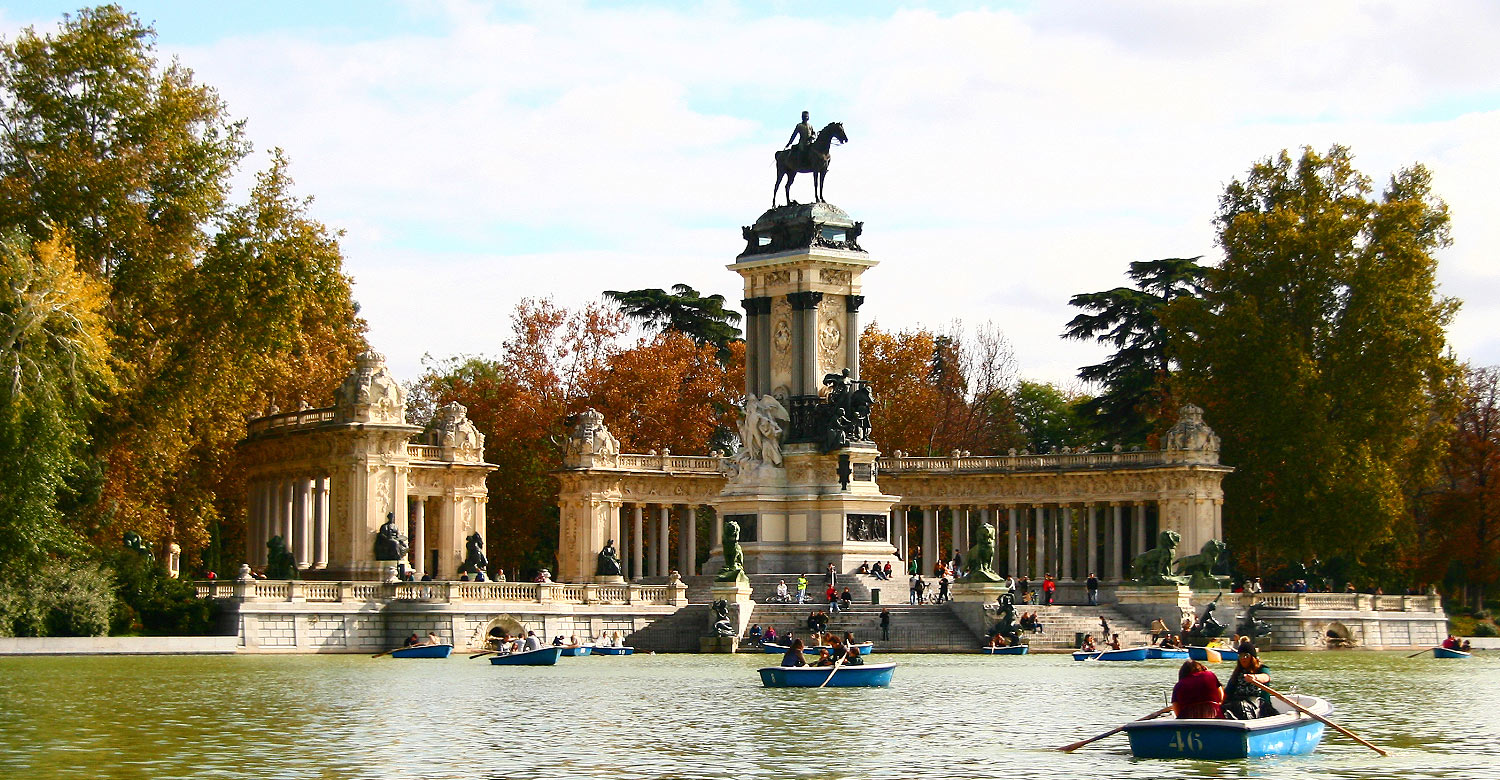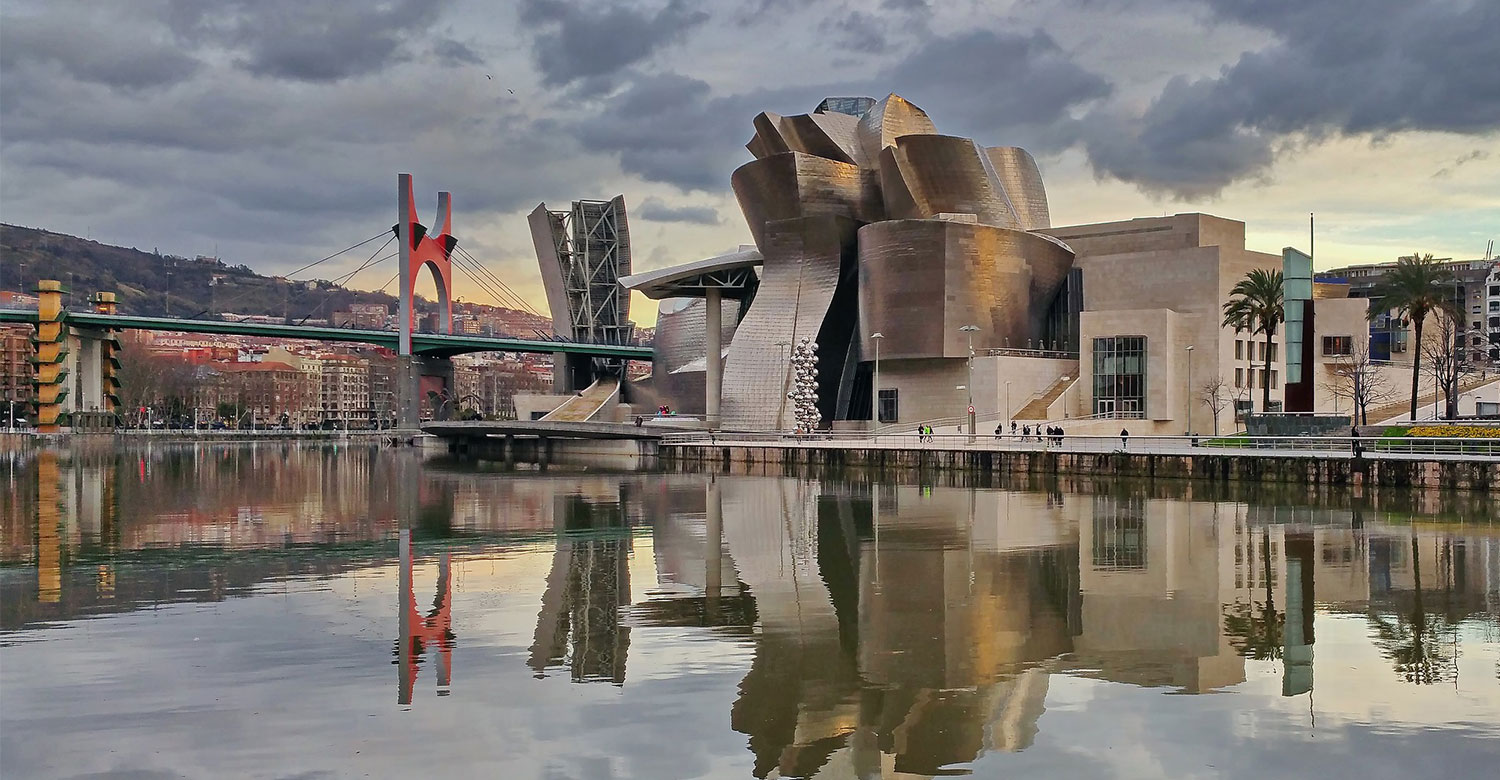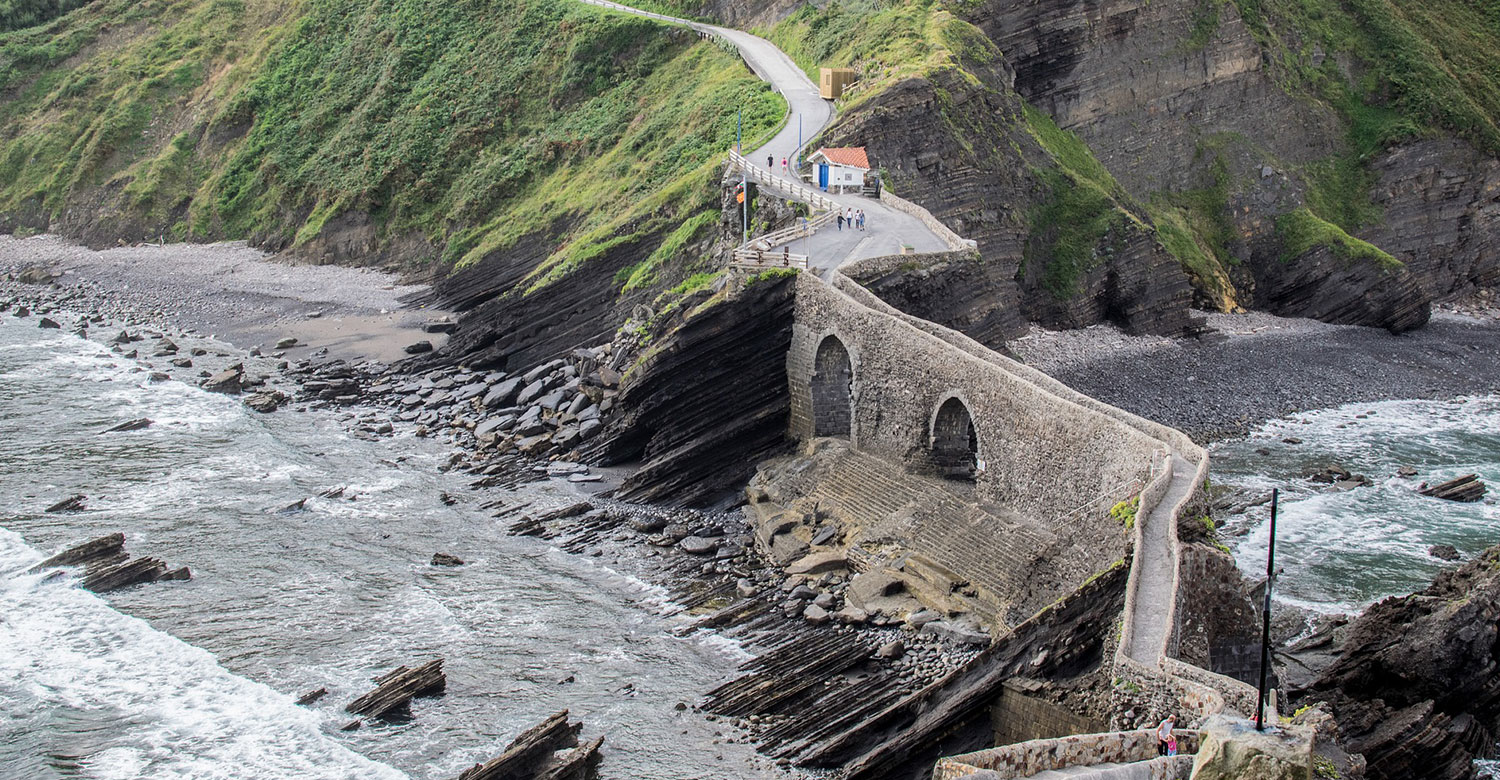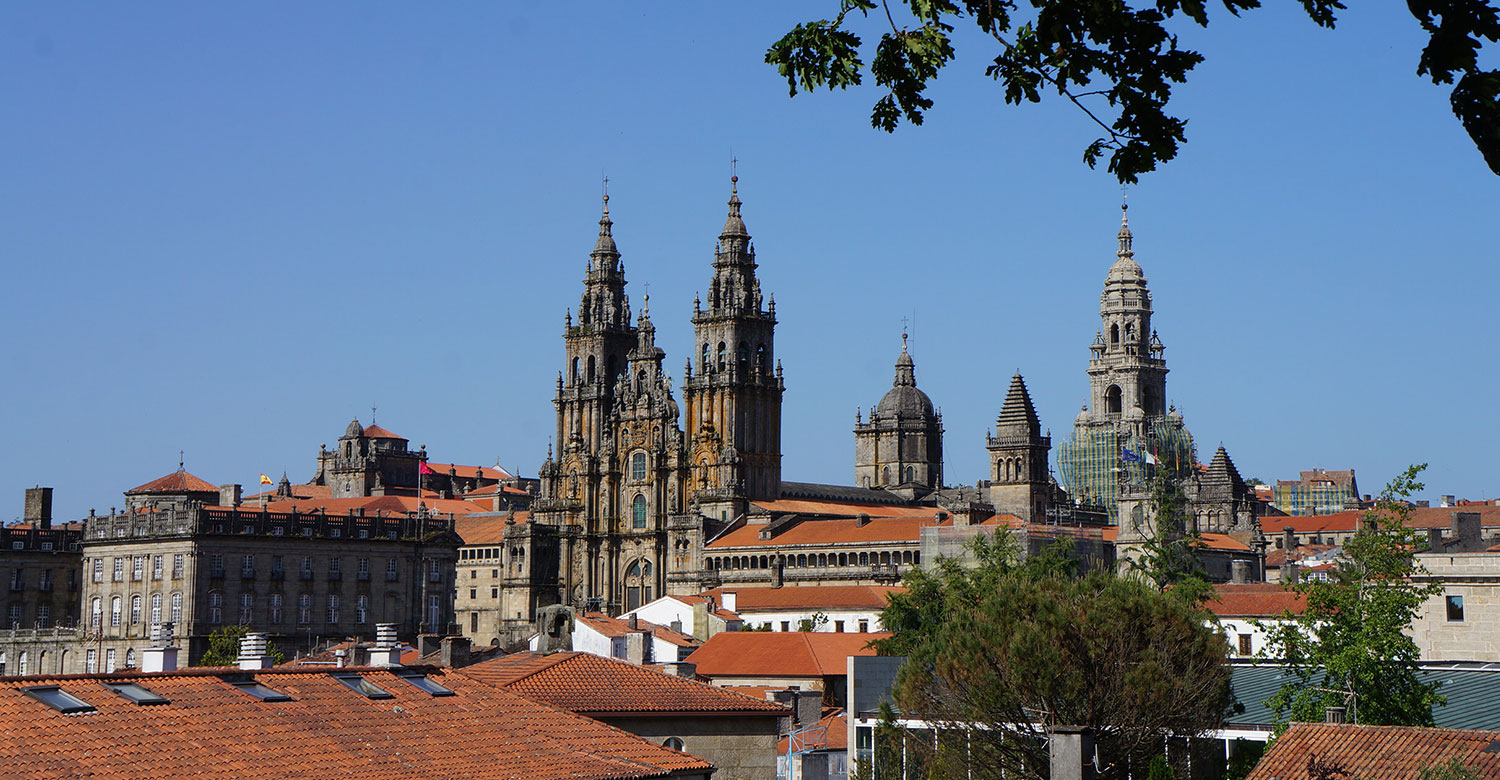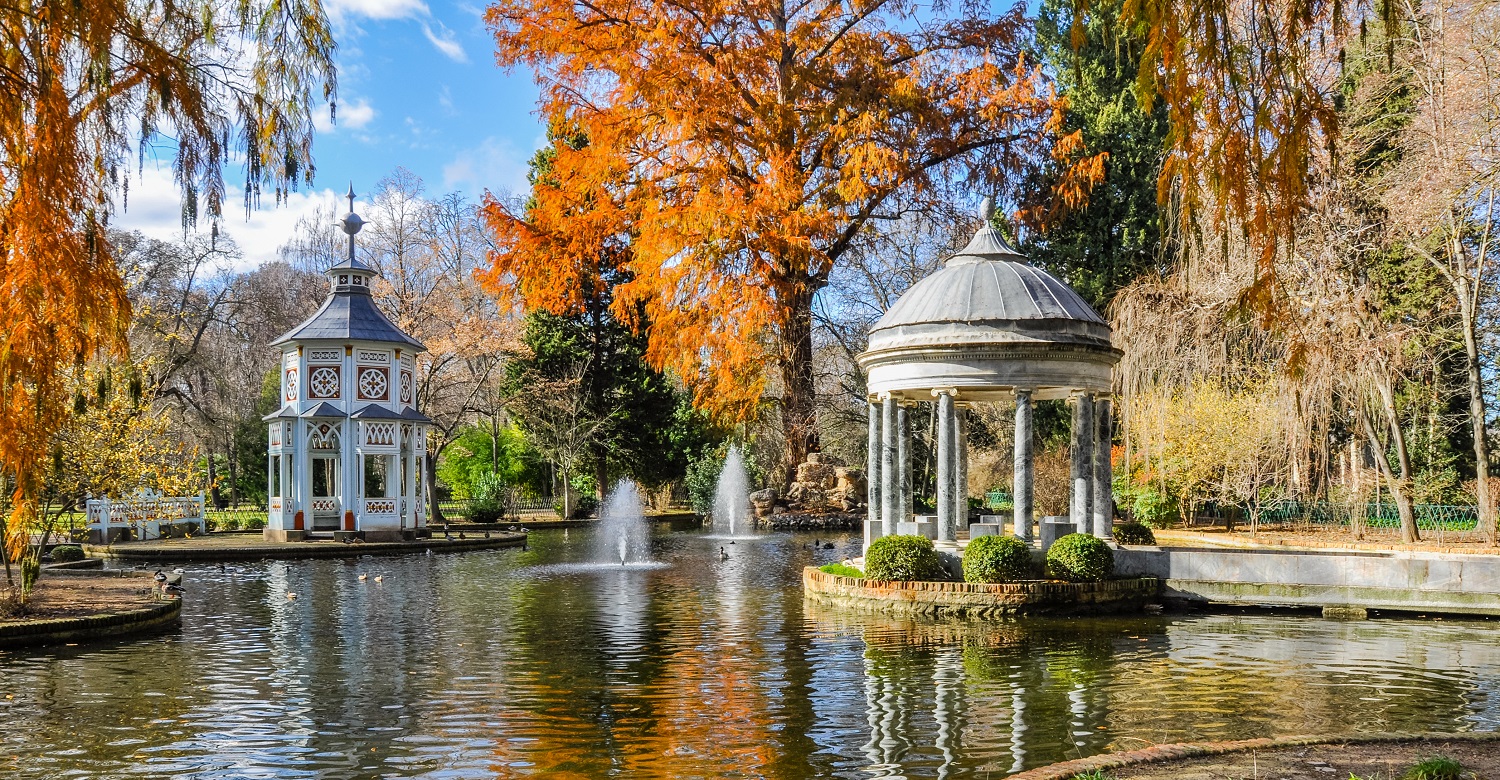Explore the different regions to visit in Spain
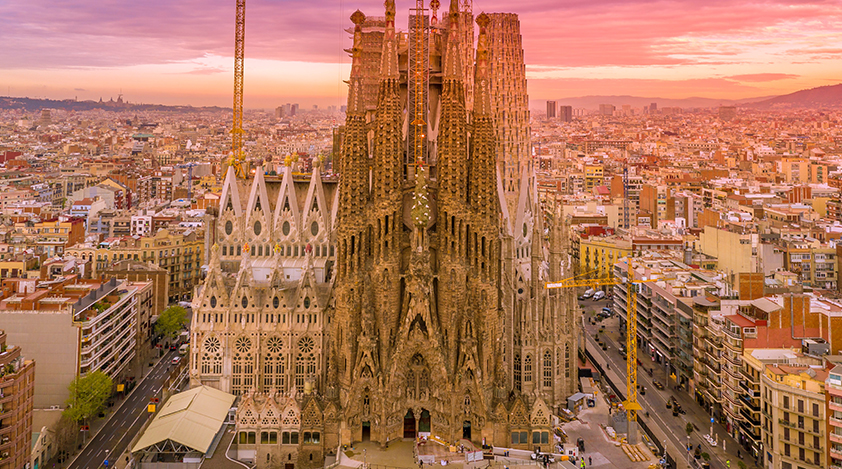
Posted by on 22 Apr 2021 , in Europe
madrid
Take the opportunity to enjoy a guided tour of some of the famous museums of the city, the Reina Sofia art museum, El Prado or the Thyssen Bornemisza. Among the monuments not to be missed in Madrid are the central square "Plaza Mayor" of Renaissance style, the Royal Palace built in the 18th century, and the adjacent Sabatini Gardens, and the "Puerta del Sol" (gate of the sun), dating from the 15th century, which was once the main entrance to the city. You can't leave Madrid without having tasted the famous "cocido madrileño" (a kind of soup with chickpeas and meats) which is the traditional madrilean dish of excellence.
When to visit
- Spring (especially April and May) and autumn are the best times to visit Madrid.
- Summer can be really hot, although it's a dry heat.
- While winter can be quite cold and snow is possible though rare.
Barcelona & Catalonia
The eclectic Sagrada Família church and other modernist landmarks designed by Antoni Gaudí dot the city. Museu Picasso and Fundació Joan Miró feature modern art by their namesakes. City history museum MUHBA, includes several Roman archaeological sites.
The Barri Gotic (Catalan for "Gothic Quarter") is the centre of the old city of Barcelona and also know for its popular markets, Mercat de La Boqueria, one of Europe's largest food markets, packed with tempting delicacies and tapas bars. Wandering along the bustling boulevard Rambla del Raval is an essential Barcelona experience.
Few European cities can offer you the wide diversity of cultural experience that you'll find in Barcelona. Couple that with the luxury of 4.2 km of beach only a short walk from the city centre, warm sunshine most of the year, you have all the makings of a complete holiday in Spain.
From the Pyrenees mountains, with plenty of picturesque villages and miles of coastline with charming coves and white villas to cities that have preserved ancient monuments, and hidden corners that seem rooted in medieval times just waiting to be explored in Catalonia.
When to visit
- Early summer and fall are ideal times to visit, especially May to June and September to October.
- Even in the winter, days are crisp to cold but often sunny. Snow is quite rare in winter.
This is the best times of the year for sightseeing tours as well, with thinner crowds, shorter lines and warmer, but not too hot, weather.
Basque Country & Northern Spain
The road from San Sebastián to A Coruña is one of the big cities, pretty fishing towns, high cliffs and raging sea. It skirts the rugged Basque coast, runs through lush Cantabria and Asturias, and ends up in Galicia, on the wildly beautiful Costa de la Muerte.
You can't miss San Sebastián, a lovely seaside metropolis, widely considered one of the best places to eat in the world and Bilbao with its modern architectural landmark, Guggenheim Museum, undoubtly emblem of the city itself.
What better way to explore the North of Spain in depth than enjoy an active adventure focused on one or more specific regions? Spend time in the countryside, and enjoy historic villages and places of extraordinary beauty by bike or on foot. Creating your personalised Camino to Santiago de Compostela has never been easier.
When to visit
- The summer months of July and August are the best times to visit northern Spain. Cities near the Atlantic like Santiago de Compostela, Oviedo, Santander, and San Sebastian experience their best weather and least amount of rainfall during these months.
- If you’re looking just for a city break in northern Spain, you can pretty much visit any time of year.
- If you prefer outdoor activities however, then spring, summer or autumn are probably the best time to head there, but you may run the risk of encountering the rainy season, especially in the spring.
Costa Del Sol & Southern Spain
Southern Spain is where all of the Spanish stereotypes come to life, home to Flamenco, paella and rustic tapas dishes. Travellers interested in history will be enchented by the stories that built the south. Founded by Romans and then ruled by Islamic Moors over 800 years, Andalucia is a living tribute to Moorish heritage with its Alcazars, Mosques and whitewashed hilltop towns, threaded by winding, cobblestone streets.
Well worth a guided visit, is the last stronghold of the Moorish Kingdom, the most visited site in southern Spain, the mystical Alhambra in Granada.
Equally as impressive is the Mezquita in Cordoba, once upon a time, a mosque so important it was second only to Mecca. In fact, the whole city of Cordoba was in the 10th century, a city where Jews, Christians and Muslims all lived in peace, sharing knowledge and customs. The other gem of the south is Seville with its striking colonial architecture in the old town and the massive Gothic Cathedral in the town centre.
The Costa del Sol is a region along the coastline of the Province of Málaga that shows a diversity of landscapes: beaches, cliffs, estuaries, bays and dunes.
The famed Torremolinos, Benalmádena, Fuengirola, Mijas, Marbella, Estepona, Manilva and peaceful Casares make Costa del Sol a dream location for a holiday with over 325 sunny days a year and a benevolent climate.
The pace of life here is slow, mostly because it’s too hot to be in a hurry! If you enjoy afternoon naps and long evening strolls, look no further – Andalucia is your next destination.
When to visit
- The weather in the south is warmer than the north, meaning the only time of the year you really should avoid, are July and August. Seville is the hottest part of Spain, frequently seeing summer temperatures rise to 45 degrees. While the coastal towns of Malaga and Cadiz are cooled by evening sea breezes.
- October and November are good options and off-season which is a plus if you’re wanting to visit the sights.
- Alternatively, March through June are also great months to visit, allowing you to enjoy the buzz of the summer nights while avoiding the summer’s peak. Winter is quiet in comparison but notably warmer than northern Europe.
Spanish Islands
Spanish islands are known for their impeccable hues of green and blue lapped by sunlit charm and vibrant seafront fares. From the glitz and glamour of Ibiza, to the multi-faceted charm of Tenerife. to Mallorca - the favorite spot of Spain's royal family, our team has shortlisted the best of Spanish islands and handpicked the best tours and experiences where you can explore Spain at its fullest. Contact us to learn more about the beautiful islands of Spain.
Some popular packages from Spain Holiday Packages and Travel Deals
Subscribe now for your chance to win
a $500 Travel Voucher
Be the first to hear about our new Holiday Packages

